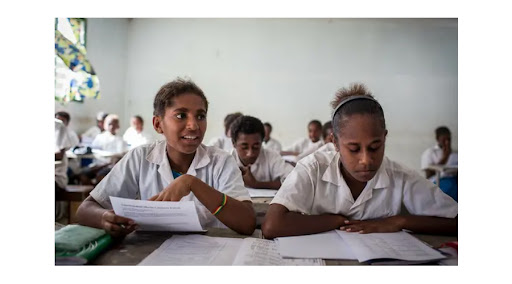By Mercy Chipo Jumo
4 May 2022 12:33 PM
Quote
“If you educate a girl, you educate a nation,” an African proverb tells us. While it is important to invest in the education of girls for their own sake, benefits ripple to children, families, and their communities more broadly when women and girls have access to education.”
Last month, the world celebrated International Women’s Day. Its theme was “gender equality today for a sustainable tomorrow”. Amid the buzz of important discussions on the gendered impacts of climate change and Covid-19, equal pay, and gender equality in the home and workplace, I was reminded how Covid-19 worsened the plight of girls for the past two years, especially when it comes to their protection and education.
We know that most girls with an education live healthy, productive lives and earn higher incomes in adulthood, building better futures for themselves and their families. Evidence shows communities with educated girls are more prosperous, resilient, and peaceful. Women’s economic empowerment and maternal health programs affirm that women invest a greater portion of their earnings – 90 cents of every dollar – into their families and communities than men, who invest 35 cents per dollar.
However, the pandemic has increased risks for girls already disadvantaged by prevailing social, cultural, and traditional practices. Its knock-on effects have increased poverty and aggravated inequality in a gender-biased world already experiencing the impacts of conflict and displacement, climate change and food insecurity.
It is estimated that 10 million more girls will be forced into early marriage in the next decade due to the economic pressures from the pandemic, combined with harmful social customs. Loss of livelihoods, coupled with school closures and rising childcare needs, have increased the burden of unpaid domestic work for girls.
Many girls have been forced into transactional relationships for basic goods, putting them at greater risk of sexual exploitation: since the pandemic, access to reproductive health services has dropped and adolescent pregnancies have risen, heightening the risk of girls dropping out of school due to stigma and laws and educational policies unfavourable to adolescent mothers.
Education is a fundamental building block for both gender equality today and a sustainable tomorrow, yet millions of girls worldwide are being denied the right to an education – a tragedy made worse by mass school shutdowns over the last two years. About 1.9 million girls and young women were estimated to be out-of-school (pre-primary to tertiary) in 2020 due to Covid-19 in the East Asia and Pacific region alone. Some analysis suggests, in the worst case scenario, 53% of adolescent girls may have not returned to school after lockdowns.
A World Bank-UNESCO-UNICEF report, The State of the Global Education Crisis: A path to recovery, warned of a global spike in “learning poverty” triggered by Covid-19 school shutdowns. The report found that more than 1.6 billion learners were affected worldwide and that pandemic-related disruptions could cost this generation of students close to $17 trillion in lifetime earnings. As education switched to remote learning, children from low-income families, students with disabilities, females and young learners were further disadvantaged due to limited access to the required technology.
There is evidence that fourth grader girls in South Africa suffered 27% more losses in learning English than boys, when South African girls usually outperform boys in reading. In Kenya, 74% of adolescent girls said they were distracted from learning by household chores, reflecting the gendered nature of unpaid work. There are stories of fathers in Nigeria “actively” discouraging their daughters from using technology for education while they supported their sons to continue learning online.
Despite being significantly affected by the pandemic, education has not been prioritised in stimulus spending. Only 3% of Covid-19 stimulus packages in high-income countries was allocated to education while less than 1% was allocated in low and lower middle-income countries. In Asia and the Pacific, only 0.4% of stimulus spending has gone towards education.
When Australia invests in education through its aid program, it delivers results. The most recent Performance of Australian Aid report, produced for 2018-19, found education investments were the most effective of all sectors, outperforming aid investments in governance, infrastructure, health and agriculture projects.
However, education hasn’t featured highly in Australia’s recent aid budgets, despite the toll the pandemic has taken on children’s education in the Pacific region and further afield. Australia’s development assistance for education has actually been cut by 22% in nominal terms in recent years, falling from $698 million in 2015-16 to $541.3 million in 2021-22.
We cannot forget the global commitments and aspirations of the Sustainable Development Goals, especially SDG 4.1 to ensure that all girls and boys complete primary and secondary education. At this critical time, the safe reopening of schools must be prioritised and this includes keeping schools open where possible.
Donors like Australia can help strengthen education systems and support early-warning systems to monitor absenteeism and the non-return of students, especially girls, as schools reopen. When students don’t return, referral systems should be put in place to address this. Australia’s aid support for education should be lifted, in line with the scale of the challenge. It should also be recalibrated to focus on girls’ education.
In 2018, for example, just 23% of Australia’s aid spending on education was targeted at children, according to World Vision’s analysis of OECD purpose codes and aid descriptions.
To achieve “gender equality today for a sustainable tomorrow” we need a renewed focus on education in general and girls’ education in particular. Then we will show we have truly understood the African proverb that girls’ education is at the heart of progress.
End of quote
Footnote.
This article appeared first on Devpolicy Blog (devpolicy.org), from the Development Policy Centre at The Australian National University.
Mercy Chipo Jumo is a Senior Policy Advisor on Child Rights with World Vision Australia.
Source – Solomon Times Online.
Yours sincerely
Frank Short



